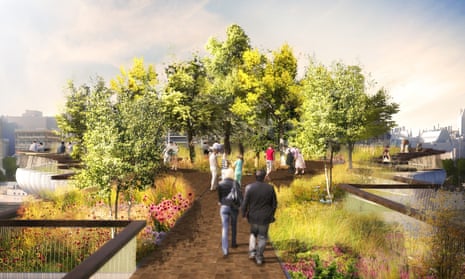Compare and contrast these two stories. In Lancashire, five museums will close on 31 March because the county council needs to cut its museums budget from £1.3m to less than £100,000 so that it can maintain at least a skeletal version of statutory, essential services such as rubbish collection. Two of the museums, including the last steam-powered weaving mill in Britain, have been designated as sites of national importance. Another five Lancashire museums have had their council funding withdrawn and been left to look after themselves – their future is uncertain. Forty of the county’s 74 libraries are also to be culled. Other parts of England, particularly in the north, are of course familiar with similar closures and cutbacks, but in Lancashire they amount to a cultural disembowelment. First they came for the mills, you might say, and then for the libraries, and then for the museums that the mills had become.
Now let’s move to London (as everybody should do, obviously, if they have the money). The national museums and galleries look in good shape, their budgets reprieved from the expected cuts in November’s spending review by a chancellor who apparently understood their spiritual as well as economic value. But London, even in these straitened times, not only has money available to keep cultural spending at the same level, it can actually increase it. About £60m in public funds, for example, is to be spent on an ornamental footbridge across the Thames, the Garden Bridge, which was originally to have been built from the philanthropy of private enterprise until the estimates of its cost rose by £115m to £175m, at which point the London mayor Boris Johnson pledged £30m from Transport for London, with another £30m promised from George Osborne at the Treasury.
Who wants this bridge? I know nobody who does. The field at the moment seems confined to Johnson, who would like it as his London legacy; Thomas Heatherwick, who designed it; the firm of Arup, who engineered it, and the actor Joanna Lumley, who in 1998 conceived it as a memorial to Diana, Princess of Wales. Who needs the bridge? Nobody does, known to me or otherwise. Ten bridges cross the Thames in the two-mile stretch between Westminster Bridge and London Bridge, seven of which can be used by pedestrians. This, the 11th, will span the river between the crossings at Waterloo and Blackfriars; a lawyer rushing from Middle Temple to curtain-up at the National Theatre might knock a few minutes off his journey, but otherwise it’s hard to think who benefits in any practical way.
The bridge comes with rules. It will be closed between midnight and 6am; cyclists will have to dismount to cross; banned activities include social gatherings, playing musical instruments, making a speech, scattering ashes, releasing balloons, flying kites and all forms of physical exercise other than jogging. Apart from its nightly closure, the bridge will also be shut to the public for 12 days a year to accommodate private parties and other events.
Its purpose is purely aesthetic: to let people stroll among trees, shrubs and wildflowers from an interesting new vantage point in the heart of the city. (According to the Guardian’s architecture critic, Oliver Wainwright, the visualisations “depict a fecund floral utopia – but the reality … is likely to be closer to some pot plants clinging on for dear life above the windswept river”.) The princess’s death provoked several similarly daring ideas – I remember a Gordon Brown suggestion about renaming Heathrow (we might now be arguing over the third Diana runway) – and it is interesting to wonder why this one survived.
Friendship may have something to do with it. Lumley has known Heatherwick for a long time – at least since 2004, when her autobiography described him as a designer of “incomparable originality” – and Johnson for much longer. When the Heatherwick Studio submitted its bridge design to Transport for London in 2013, it listed “Joanna” as an associate who had worked with it for more than a decade – she had been “involved with the strategic development of a number of the studio’s self-initiated public projects in London”. And when, on a BBC show the same year, Alan Yentob gently quizzed Lumley about how Johnson had reacted to her plan, she said: “I’ve known Boris since he was four, so he was largely quite amenable.”
Human beings are, of course, social animals and tend to combine in their own interest (some Dorset labourers were transported to Australia for it). The question now arising is whether this London combination broke the rules. Thanks to the Freedom of Information Act and some diligent work last year by the Architects’ Journal, we know that Lumley wrote to Johnson soon after his re-election in 2012 saying she wanted to talk to him “most earnestly” about her bridge – and that the mayor replied that, much though he would like to hear her ideas, his packed diary meant that instead she would need to meet his deputy mayor for transport and chief of staff.
Nonetheless, this meeting had its effect. Transport for London decided that “a new footbridge … connecting the South Bank with the Temple area” was a feasible idea. No mention of gardens there, or in the invitation-to-tender document that followed in 2013, when TfL invited three architects to submit footbridge designs and gave higher marks to Heatherwick in the “relevant design experience” category, despite the other two firms having designed many more bridges than Heatherwick Studio, which, at that time, had only one to its name. Its winning design was for what Lumley had always wanted, a garden bridge, though that can hardly have come as a surprise to her given that Heatherwick and Johnson were together promoting the garden bridge idea on a trip to San Francisco in January, 2013 – before TfL decided in favour of the Heatherwick design.
The last and most recent disclosure prompted Jane Duncan, president of the Royal Institute of British Architects, to call this week for a halt to the project and an investigation into the procurement process, given “the amount of public money at stake and the seriousness of the allegations”. The RIBA isn’t the first body to worry. Last month the National Audit Office said that a “high degree of uncertainty” hung over the bridge’s value for money, and that the taxpayers’ £60m was at greater risk than the private funding. This week a spokesperson for the London mayor said by way of reply that an (unspecified) audit had already found the process “open, fair and transparent” and that Johnson didn’t intend to halt a project that would be “a spectacular new addition to London”.
So there we are. A sum of £60m, adjusted for inflation, would keep Lancashire’s museums open for nearly the next half century. Instead, thanks to the power of the chums, it will help finance an unwanted, unnecessary new ornament in London. I like London, but it isn’t hard to understand why so many other people hate the place.










